Today’s post is going to be quite different from what we usually publish on Makimo’s blog.
Last week, Toastmasters District 108 Annual Conference 2024 “Łódź You Dare” took place, with me as the conference chair and Makimo as one of the event sponsors. I’d like to share with you a story about how we ensured the quality of the hybrid contests held on May 24th and 25th.
The catch was this:
- Full bidirectional streaming from our venue was a pricey option. While it would have been the best option, it didn’t fit the event’s carefully calculated budget.
- We needed to satisfy the contest’s fairness requirements. Especially during the evaluation contest, all of the contestants would need to listen to the test speaker, and we didn’t want to give an advantage to the ones present in person at the event.
A dare to take up the task
Makimo specializes in out-of-the-box solutions and we do so much more then just software development and consulting. My co-founder, Mateusz Papiernik is a quality freak when it comes to sound fidelity. This is why we have battle-tested hardware in Makimo that helps us do two podcasts:
- Krzysztof Rychlicki-Kicior’s Software z Każdej Strony in Polish.
- Justyna Papiernik’s Let The Tech Out in English.
Not only that, but we’ve been testing this setup during our internal Makimo CodeBetter conference for the last two years. Although setting up hybrid contests for the District 108 Conference was a challenge, our knowledge was grounded in our experience and knowledge.
The challenge
For the Artkombinat Scena Monopolis (which I’ll be naming Room A from now on) all the sound and visuals was in the reliable hands of Lim8 engineers. They provided a way to connect Zoom to the main screen and played the contestants’ sound when needed.
In Room B, we made the whole setup for the hosts and the test speaker to appear online, both for the contestants present online and in Room A.
There are certain ceremonial elements in the show that we didn’t want to omit. One of them is that the host introduces the contestant. When the contestant is introduced, it gives them a safe signal that they can begin their speech.
With the organizers, we determined that the best way to do this would be to have two hosts. One would be on the main stage in Room A, introducing the in-person contestants, and the second one would be in Room B, introducing the online contestants—the same with the test speaker.
There’s also the role of online Sergeant At Arms, who needs to be present with the contestants for a specific amount of time in a separate Zoom breakout room. Aleksander Krawiel and Maciej Cichocki took that role on Friday and Saturday, respectively.
To conclude:
- We needed to host Table Topics contestants on Friday
- We needed to host Evaluation contestants on Saturday
- We needed to provide a way for hosts to announce all contestants, confirm that they are connected and ready
- We needed to provide a way for the test speaker to perform for all evaluation contestants
The setup
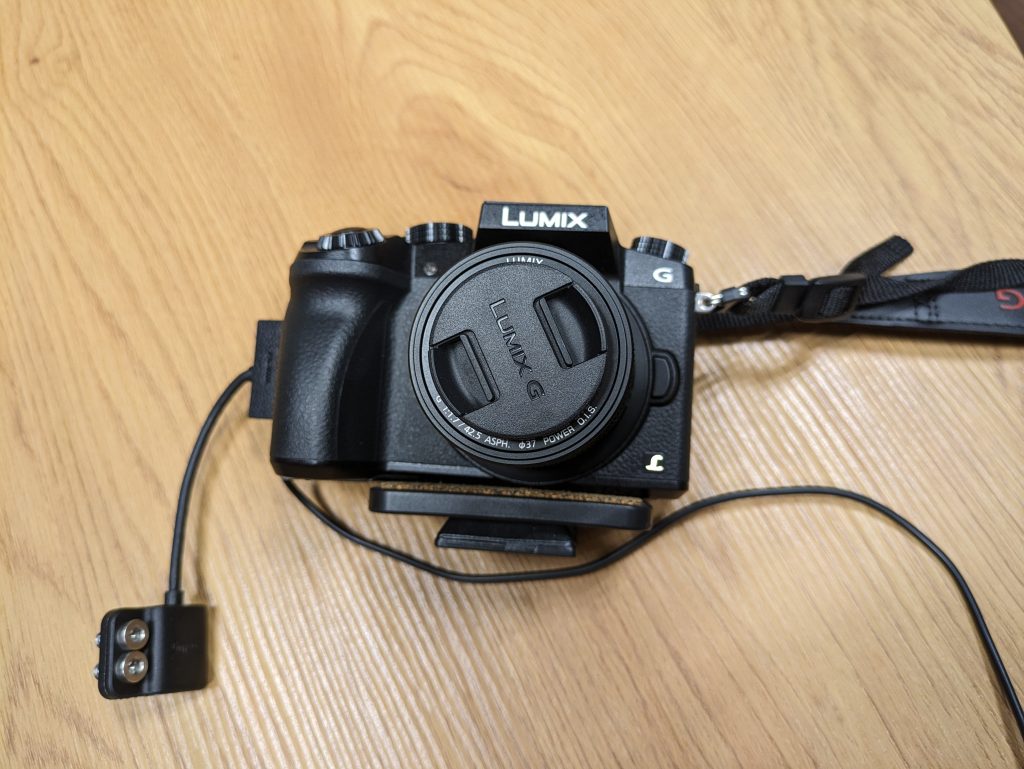
The core of this setup is a Lumix DMC-G7 DSLM system with a macro LUMIX G 42.5 mm f/1.7 ASPH lens.
In Room B, we had a lot of space, and because of that, we decided to go for a macro lens. We had one other that had a wider cadre, but it was too wide for our actual purposes.
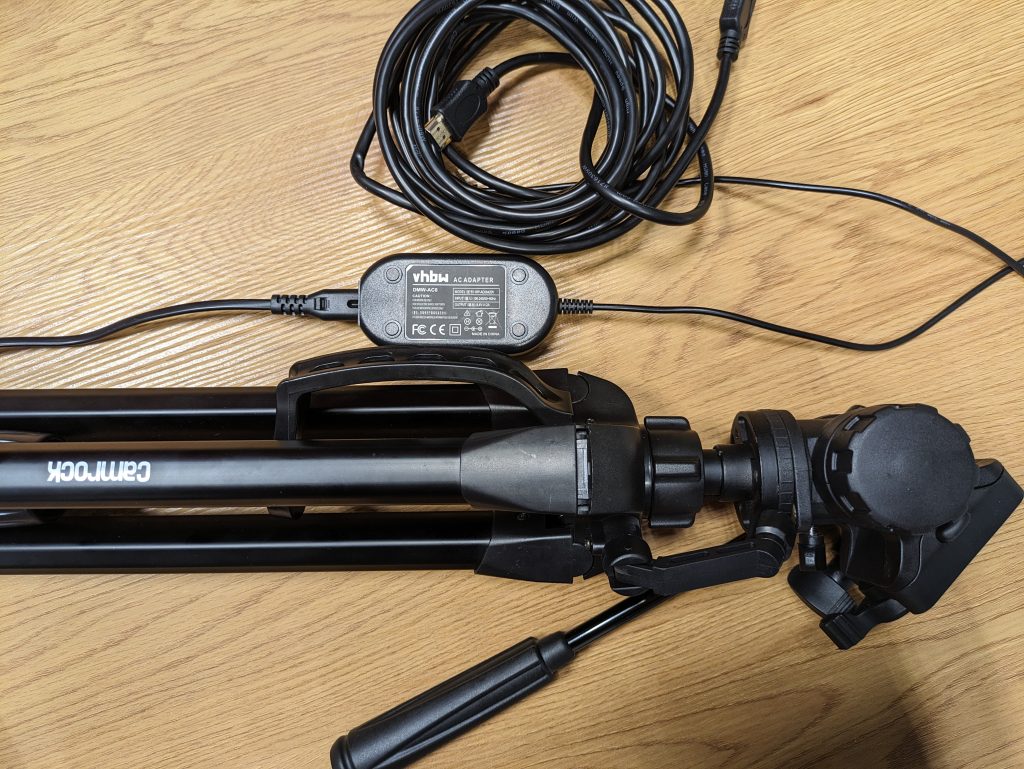
In the package, we had an HDMI adapter for the camera, and instead of a battery, we used a power adapter, which is very handy when you need not worry about the camera running out of juice in the middle of the contest. Everything was neatly seated on a Camrock tripod and connected to a computer as an external camera.
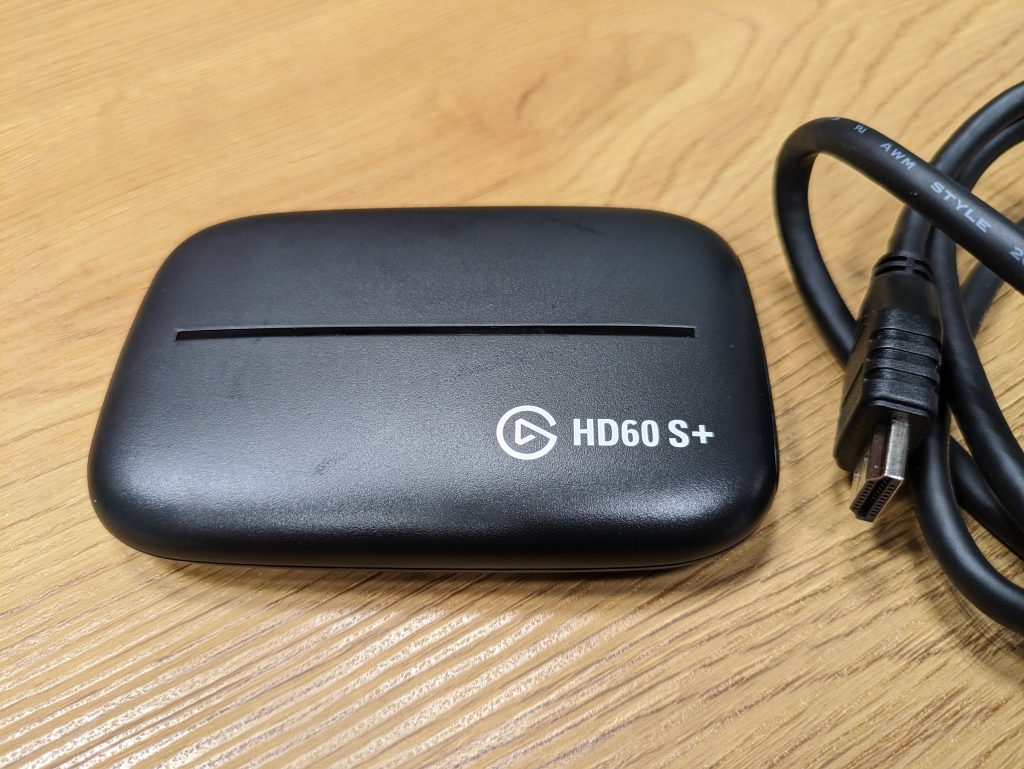
To help with that, we used the Elgato Game Capture HD60S+ External Capture Card, which streamed back the camera video to the computer. It’s very handy and easy to use, and it doesn’t need additional drivers to work on a Mac computer.
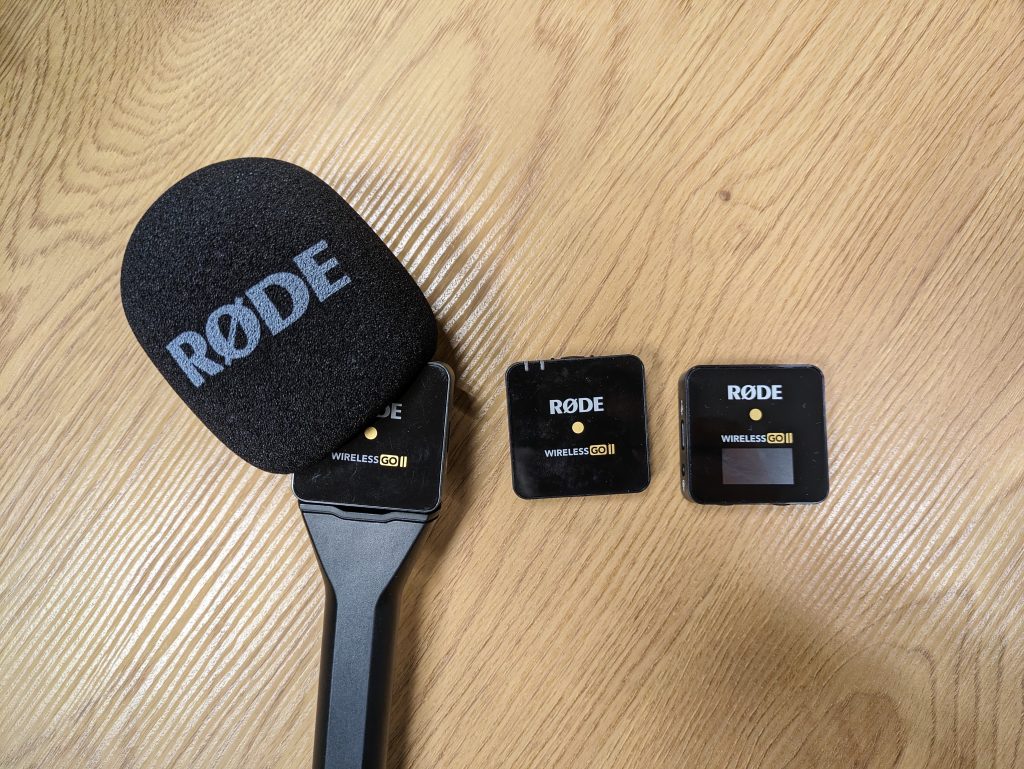
For the audio, we used Røde Wireless GO II, a battle-tested wireless microphone system. The host used the configuration above, with a handy microphone handle and wireless receiver connected to the same computer as the video capture.

The test speaker, Van Thai Nguyen, used the alternative Lavalier microphone setup to deliver his speech and keep both hands free (which is very important for the contest itself).
For the host Agnieszka Lasko on Saturday’s contest, we had the last piece of hardware completing the setup — Redmi Pro 3 earphone buds, which helped the host actually hear the contestant and engage in the conversation. That was done in contrast to the Friday contest when we signalled to Maciej Cichocki what sentence he should say at the moment.
We checked and rechecked that both microphone setups were sharp and that the camera was focused in the speakers’ area of movement, and we were ready to go.
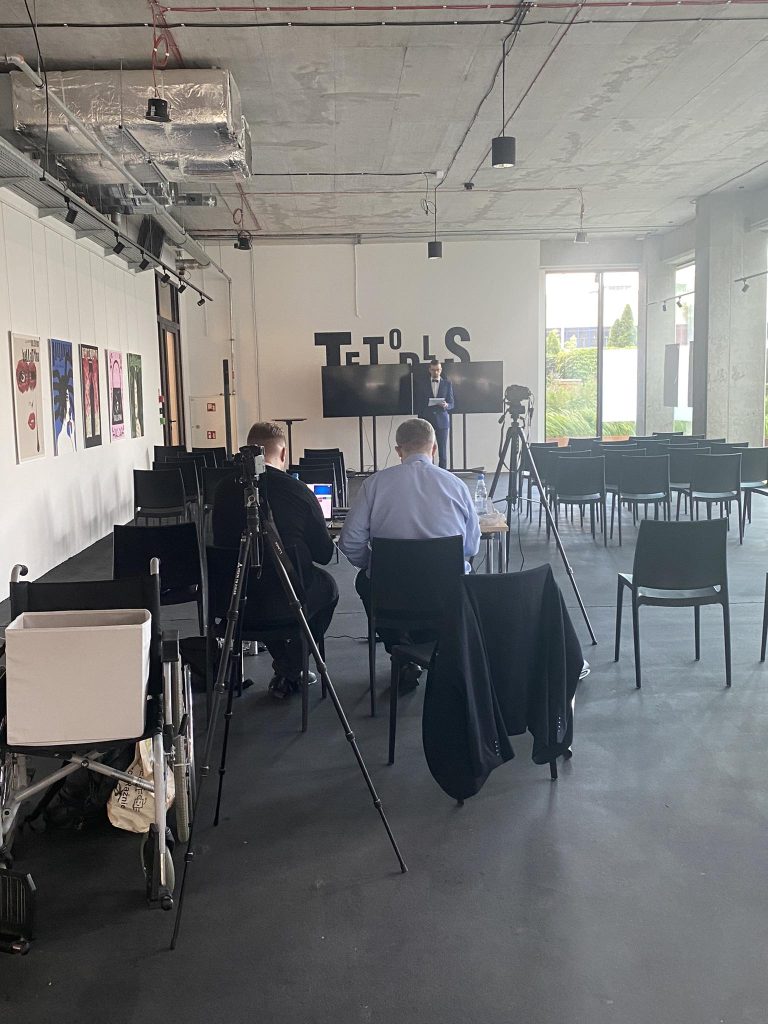
Lessons learned
Of course, there were a couple of things to be improved! One of them was that during the one-minute break for the judges, Agnieszka was out of the camera’s focus area. To fix that, I started changing the focus on the camera, which resulted in an automatic zoom on her face and a bit of a fun moment for the audience.
Another tricky thing was making sure that nobody from the online participants saw or heard the test speaker until properly introduced in the contest. That required some discipline from us in Room B, but we made it and kept the secret until the last moment.
There was also a lot of nonverbal communication required to ensure that our online hosts knew what to say at which point. At one point, I counted audience applause time with my hand, as the audio setup in Monopolis was so good that we didn’t hear the claps at all.
The following people were involved in making this happen:
- Tomasz Makuła
- Gabriela Makuła
- Michał Moroz
- Aleksander Krawiel
- Maciej Cichocki
- Agnieszka Lasko
- Van Thai Nguyen
- Ilona Żylińska
- Monika Dąbrowska
- The whole Lim8 technical staff
And I’d like to thank you all for making the contest happen.
In the end, we managed to provide a smooth experience, and that’s what matters the most.
Want a smooth software development and consulting experience?
Let’s talk!Co-founder and CIO of Makimo, deeply fascinated with philosophy, humans, technology and the future.



